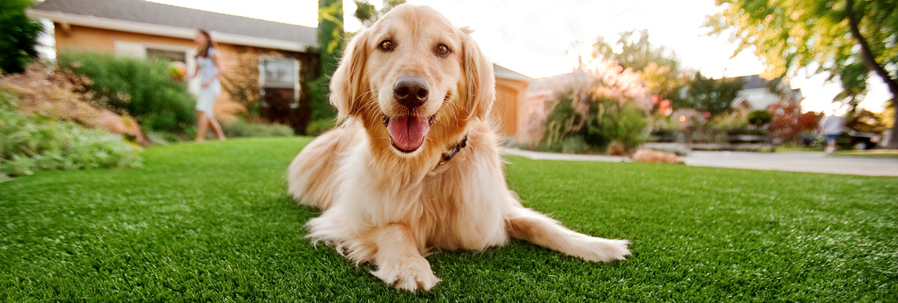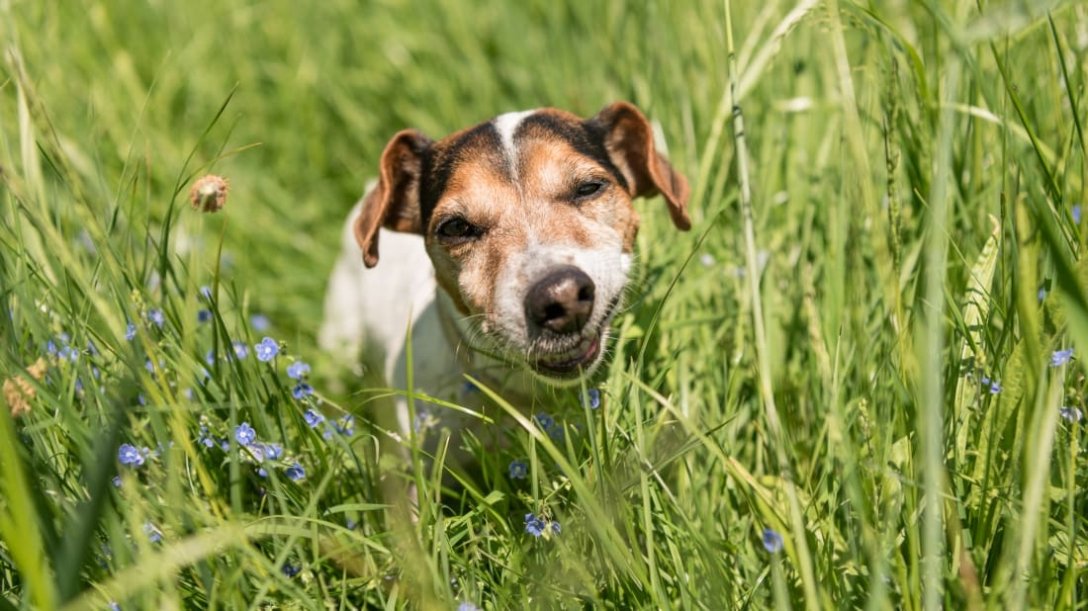Like babies, puppies are born toothless. Only gradually do their milk teeth grow, which are replaced by “adult” teeth when they change teeth. In this article, you will find out exactly what happens when a dog changes teeth, which problems can arise and how you can make it easier for your puppy to change teeth.
The teeth of the puppy and its development

Puppies start teething around the third or fourth week of life. Then it takes about eight weeks until they have their complete milk teeth with usually 28 teeth. The small, thin milk teeth of dogs are located half in the upper and half in the lower jaw and are very pointed. After playing and wrestling with the little dog, one or the other hole can be found in the clothing of the human playmate. Between their fourth and seventh month of life, the puppies then experience the change of teeth towards permanent dentition.
The change of teeth starts later in smaller dogs than in larger dog breeds and also takes a little longer. A dog’s permanent teeth consist of a total of 42 teeth. Of these, 20 are in the upper jaw and 22 in the lower jaw. The four-legged friend has six incisors each in the upper and lower jaw, two canines each (also called fangs), eight sharp-edged molars each (so-called premolars), and four further molars (so-called molars) at the very back of the upper jaw and six in the lower jaw.
A scissor bite is desirable so that the fur nose can eat optimally with its teeth and the teeth wear down evenly. When the mouth is closed, the upper jaw teeth are slightly in front of the lower jaw teeth.
When does a puppy start changing teeth?
The change of teeth takes place between the fourth and seventh month of life.
What happens when you change teeth?
When the puppy’s teeth change, the milk teeth fall out and are usually swallowed by the dogs. Rarely do animal lovers find a tooth to keep as a souvenir. Gradually the permanent teeth grow until the dog has a complete set of teeth after about three months.
How do I know my puppy is teething?
The puppy may drool more, lick its teeth and mouth conspicuously often, refuse food or, in the worst case, nibble on the furniture if it is not given a chew substitute. Fever, diarrhea and listlessness can also be side effects of teething. A clear sign that the puppy is teething is a fallen milk tooth.
You should keep this in mind when changing teeth in your dog

Dogs’ milk teeth are very fragile as they are only covered by a thin layer of enamel. That’s why you shouldn’t give your furry friend too hard food when it’s changing teeth. Dry food should be soaked before feeding and hard chews should not be given at all. You should also refrain from playing tugs or fetching during the change of teeth, because a milk tooth can easily become painfully lost. The dog may associate the pain with play or retrieval and will therefore avoid it in the future.
During the change of teeth, dog owners should often examine the oral cavity of the tooth end. Because it can happen that a permanent tooth comes through before the milk tooth has fallen out or the gums become inflamed. If so, you should definitely take your dog to a veterinarian.
Problems and discomfort when changing teeth
Like toddlers, puppies may experience pain or an itch when teething. The most common problem is breaking through the fangs. In order to get rid of this unpleasant feeling of teething, the small dogs often look for things to nibble on. The home inventory sometimes falls victim to this. If your young dog gnaws a lot, it can indicate that the teeth are changing.
If the puppies are in pain from teething, this can manifest itself in restless or weak behavior and poor sleep. Some even refuse their food. Hard dry food in particular can cause problems when eating. Soaking it in water for about ten minutes helps so that the young dog can eat it better. If there is a loss of appetite, the puppy should be weighed more often to make sure it is not losing weight.
Sometimes the gums even become inflamed and light bleeding occurs. Due to the inflammation in the mouth, the dog can also spread bad breath. It is also possible that the dog drools more or constantly licks its teeth and mouth to get rid of the wobbly milk teeth. The puppy can also be plagued by diarrhea or fever.
During the teething period, the mouth of the “tooth child” should be examined more often. If you are unsure, the vet will be happy to give you useful tips. After the sixth month of life at the latest, the little dog should present itself to the vet anyway to have its teeth checked.
Can complications arise?

Complications can arise from gingivitis or broken milk teeth. Problems can also arise if the permanent teeth break through before the milk teeth have fallen out.
Small dog breeds are more likely to have problems
Small dog breeds often take longer to change teeth than large dogs and have more problems with it. It can even lead to real complications. In smaller dogs such as Chihuahuas, for example, the milk teeth are often still there when the adult teeth are already erupting. This is known as persistent baby teeth. Then you should urgently consult a veterinarian who will have to pull the dog’s milk teeth. This way, the new teeth have space and there is no misalignment or malocclusion. A broken milk tooth is also dangerous because firstly it blocks the growth of the new tooth and secondly bacteria can easily settle there – this often leads to inflammation.
In general, it is advisable to consult a vet about the change of teeth with a small dog breed from the age of 5 months.
Which breeds are commonly affected?
Problems when changing teeth are mostly found in smaller dog breeds such as the Chihuahua.
Tips on how to make it easier for your puppy to change teeth
During the change of teeth, the four-legged friend should be able to satisfy his desire to chew with soft toys or soft chewing sticks. This also protects the furniture of its owner. The toy is ideally made of natural rubber such as dental balls or a kong. A cooling Kong can also be helpful. To do this, fill the chew toy with something your four-legged friend likes to eat, such as applesauce, liverwurst or wet food, for example. Then you put the filled Kong in the freezer for a while. Chewing on the cooling kong relieves the pain caused by the teeth coming through.
If the dog is plagued by pain, then you should definitely give him the opportunity to retreat to a quiet, shielded place. Because pain means stress for the fur nose. Homeopathic globules can also be given as support.
Since the teeth need calcium to grow, care should be taken to ensure that the feed contains enough calcium. Under no circumstances should the puppy be given additional calcium without first discussing this with the veterinarian. Because it can definitely lead to an oversupply of calcium.
What to do if there are problems changing teeth?
If you have problems changing teeth, you should ask your veterinarian for advice.
This is to be considered after the change of teeth

In order for the dog to have its permanent teeth long after the change of teeth, its owner should practice regular dental care with it. There are dog toothbrushes and toothpaste. The toothpaste with liver sausage flavor is particularly popular with dogs. It is best to get little fur noses used to dental care very early on, ideally in the first few months of the dog’s life. Otherwise, there can be a lack of understanding and problems in adulthood when one day the master tampers with the teeth of the four-legged friend. Dental care using chewing bones is more popular with four-legged friends. Chewing counteracts the formation of tartar. A bone should be given in addition to brushing your teeth.
Even dry food of very good quality is good for the teeth. Because chewing rubs off plaque and strengthens the dog’s jaw muscles. There are also numerous toys for dogs that are good for their teeth. Proper, early dental care later saves senior dogs from the painful pulling of caries-affected teeth.



























